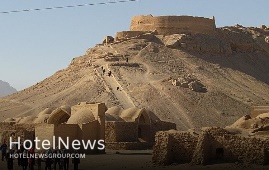
The enigmatic Zoroastrian Towers of Silence are set on two lonely, barren hilltops on the southern outskirts of Yazd in central Iran. According to a tradition dating back over 3,000 years, dead bodies were left on top of those open towers – which are also called dakhmas -- to be slowly disengaged or picked apart by desert vultures. Under ancient Zoroastrian beliefs about the purity of the Earth, dead bodies were not buried but left in these uncovered stone towers so that vultures could pick the bones clean. Narratives say that men’s corpses were placed in the outer circle, while women’s were left in the middle, and children in the inner-most ring. Bodies were then left until their bones were bleached by the elements and stripped by the vultures. After the process of purification, bones were placed in ossuaries near, or inside the towers. Ossuaries from these rituals have been discovered from the 4th and 5th centuries BC. At the foot of the hills are several other abandoned Zoroastrian buildings, including a defunct well, cistern, kitchen, and a lavatory. As Iran developed and urbanized, dakhmas became increasingly closer to city limits, severely curtailing their use. Since the 1970s, the use of dakhmas has been illegal in Iran, forcing orthodox Zoroastrians to adapt to new burial methods. According to Encyclopedia Britannica, such towers are about 25 feet (8 m) high, built of brick or stone, and contain gratings on which the corpses are exposed. After vultures have picked the bones clean, they fall into a pit below, thereby fulfilling the injunction that a corpse must not suffer contact with either fire or earth. Zoroastrian Towers of Silence are currently one of the famed travel destinations of Yazd, which is a cradle of Zoroastrianism. In July 2017, the historical texture of the city of Yazd was named a UNESCO World Heritage. Wedged between the northern Dasht-e Kavir and the southern Dasht-e Lut on a flat plain, the oasis city enjoys a very harmonious public-religious architecture that dates from different eras. With its winding lanes, a forest of badgirs (wind catchers), mud-brick houses, atmospheric alleyways, and centuries of history, Yazd is a delightful place to stay, referring to as a ‘don't miss’ destination by almost all travel associates in the region. Yazd Jameh Mosque, Dowlatabad Garden, the Yazd Atash Behram, also known as Atashkadeh-e Yazd, Towers of Silence, and adjacent desert landscape are among its tourist sites. Here is a selection of comments that visitors to the Zoroastrian Towers of Silence have posted to TripAdvisor, one of the most popular travel websites in the world: ‘Wonderful’ Should be visited to understand the ancient beliefs of Zoroastrians... This is a place where are the Zoroastrians buried their dead in the sky... (Fatih U from Izmir, Turkey) ‘Eerie’ A must site to visit if you are in Yazd to check out how the Zoroastrians dispose of their dead as they believed that after death the soulless body is impure and by burying the impure corpse in the ground, the soil becomes contaminated with impurity. (shadgerami from Nikolayevsk-on-Amur, Russia) ‘An extraordinary site’ We had planned to visit a dakhma when we toured Uzbekistan but had to give it a miss, so I was eager to visit these in Yazd. I had not realized that buildings are having a ritual function associated with the dakhma. Each family has its own building where a final funerary meal is eaten before the deceased is taken to the dakhma for excarnation. It was fascinating to walk around that part of the site before ascending the dakhma. The ascent is quite steep but aided by proper steps. Once in the main platform, there are excellent information boards in English explaining the processes undertaken. (Rod F from Royal Wootton Bassett, UK) ‘Spookily beautiful’ It is one of the most interesting sites we visited on our trip to Iran and one of the greatest reasons to add Yazd to the tour program. Totally recommended! (Muge S from Istanbul, Turkey) ‘A unique place to visit’ I can imagine how hot it must be here in the summer... we visited Yazd at Christmas time and the weather was perfect, sunny but not too hot. Climbing up to the hill makes you sweat but standing right where the corpses were left is a unique experience that catches one’s imagination. There are helpful postings in English that help you understand the context and the customs. You really can’t miss this if you visit Yazd. (Joscar00 from Stockholm, Sweden) ‘Interesting history!’ Easy walk/hike to the top. One of the towers is on a much higher level than the other. Best time to go early morning or before the sunset. (Aida B from Los Angeles) ‘Very interesting place with strong energy flow’ Don’t miss the whole story of this place as it makes it so unique and special. Going up is essential to see the whole place. Also, it gives good views around. There is very strong energy there. Going up to one of the towers is rather enough but you can choose the less popular one. This place is worth 20 min drive from the city center. (Very-sunny from Lodz, Poland) ‘A very interesting and beautiful place’ For millennia and until recently, in the 1970s, this place was used to dispose of the dead, a high priest would chop the pieces of the bodies to be fed to the birds. It is located outside the city and you can visit it on tour or by taxi. There are some temples or buildings at ground level and then you have the two hills with their sanctuaries on top. A great experience. (Etienne T. form New York) ‘Must do in Yazd’ A unique place to visit. Read a bit about the background before you come as all explanation is only in Farsi. Walk up the tower and try to imagine how the burial ceremony must have been like in those days. A must-do when in Yazd. (Isabella Deruiter form Rotterdam, the Netherlands) ‘Iconic place in Yazd with very interesting history’ This place is an essential part of the Zoroastrian religion, where the followers lay their dead loved ones' bodies at the top of the tower for the scavenging birds and weather to 'disintegrate' the bodies. The ascent to the top requires a basic level of fitness but the view of Yazd city from the top is good. I remember seeing motorbikes that bring you to the top too. (Wei T. from Singapore)
Create: Oct 13, 2021 Edit: Oct 13, 2021 Regional News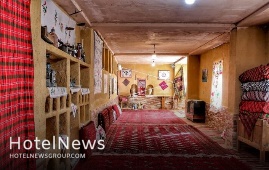
The private sector has invested 22 trillion rials (some $523 million at the official exchange rate of 42,000 rials per dollar) in the tourism sector of the northeastern province of North Khorasan during the first half of the current Iranian calendar year (started March 21). This investment has been put into 12 ongoing projects across the province, which are being carried out by the private sector, the provincial tourism chief has announced. A greater volume of investments in the tourism industry is required to accomplish the efforts being made to present the province in a true and correct light to the international community, Ali Mostofian said on Monday. Local travel insiders believe that traveling in North Khorasan is gaining momentum by degrees, creating lucrative opportunities for the tourism industry. According to Lonely Planet, most foreign tourists pass straight through North Khorasan in transit between Mashhad and Gorgan, but if you have time to explore, it's worth diverting south from the capital, Bojnurd, towards Esfarayen, famed for its wrestling tournaments, the remarkable citadel of Belqays and the partly preserved stepped village of Roein some 20km north.
Create: Oct 13, 2021 Edit: Oct 13, 2021 Regional News
UNWTO and Netflix have partnered on the publication of a report which looks at the role of film and series as drivers for tourism and cultural affinity. The Global Report on Cultural Affinity and Screen Tourism explores the growing affection one has towards a particular country or culture displayed on the screen. The findings of the research were presented in Madrid against the backdrop of the Iberseries Platino Industria - the largest international event for professionals linked to the audiovisual industry in Spanish and Portuguese. The report’s ultimate goal is to support policymakers and key stakeholders within the tourism sector to implement policies that make their destinations attractive for audio-visual producers. At the same time, it aims to help in the building of focused strategies to promote tourism and consumption of local culture, investing in skills and training to develop the local film and creative sectors to ensure a high level of talent, infrastructure and production capacity and integrating tourism and showcasing culture at film festivals to deepen the global audiences’ knowledge. UNWTO Secretary General Zurab Pololikashvili says: “Both tourism and the audiovisual sectors celebrate and promote culture, support jobs and provide opportunities in diverse locations. The joint work of UNWTO and Netflix will help destinations realize the potential benefits of screen tourism. Dean Garfield, Vice-President, Public Policy, Netflix: “As highlighted in this research, we have been able to demonstrate conclusively what we instinctively already believed, which is that alongside the desire to travel and visit destinations, exposure to screen content also leads to greater interest in heritage, culture, language, and developing interpersonal relationships. This truly demonstrates that the creative industries, cultural exchange, storytelling, and tourism are all interlinked and can transform the way communities perceive and connect with each other.” Following the presentation of the Global Report, experts on tourism and the audio-visual industry shared their knowledge and insights into changing trends in screen tourism, its positive impacts on strengthening cultural affinity and the role of online streaming services in promoting tourism and cultural affinity between people, cultures and countries in line with the 2030 Agenda. The event also served to underline how public-private partnerships can support destinations to promote themselves as attractive locations for audio-visual producers.
Create: Oct 11, 2021 Edit: Oct 11, 2021 International News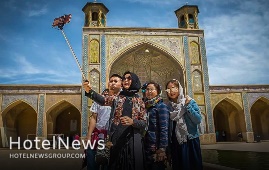
Though international tourism has revealed signs of a rebound as some destinations eased travel restrictions over the past couple of months, the lack of international coordination and slow vaccination rates in several countries and regions suggest it may need a longer time to bounce back. On the one hand, according to the latest edition of the UNWTO World Tourism Barometer, an estimated 54 million tourists crossed international borders in July 2021, down 67% from the same month in 2019, but the strongest results since April 2020. This compares to an estimated 34 million international arrivals recorded in July 2020, though well below the 164 million figure recorded in 2019. On the other hand, another research conducted by Oxford Economics on behalf of the World Travel and Tourism Council (WTTC) reveals that countries’ GDP is expected to increase only by less than one-third, as tourism is recovering even slower than expected. The research was based on the current vaccination rates globally, consumer confidence, and less stringent entry and travel restrictions in the world. However, prospects for September-December 2021 remain mixed, according to the latest UNWTO Panel of Experts survey, with 53% of respondents believing the period will be worse than expected. Only 31% of experts expect the point to better results towards the end of the year. The survey also shows that most tourism professionals continue to expect a rebound driven by unleashed pent-up demand for international travel in 2022, mostly during the second and third quarters. Almost half of all experts (45%) continue to see international tourism returning to 2019 levels in 2024 or later, while 43% point to a recovery in 2023. By regions, the largest share of experts pointing to a return to 2019 levels in 2024 or later are in Asia and the Pacific (58%). In Europe, half of the respondents indicate this could happen in 2023. West Asia is the most optimistic, with a full recovery expected by 2022. The sector needs leaders who can recognize ideas that will make a difference, who will innovate and back entrepreneurs and start-ups. As mentioned by the UNWTO Barometer, most destinations reporting data for June and July 2021 saw a moderate rebound in international arrivals compared to 2020. Nevertheless, 2021 continues to be a challenging year for global tourism, with international arrivals down 80% in January-July compared to 2019. Asia and the Pacific continued to suffer the weakest results in the period January to July, with a 95% drop in international arrivals compared to 2019. West Asia (-82%) recorded the second-largest decline, followed by Europe and Africa (both -77%). The Americas (-68%) saw a comparatively smaller decrease, with the Caribbean showing the best performance among world subregions. Meanwhile, some small islands in the Caribbean, Africa, and Asia and the Pacific, together with a few small European destinations recorded the best performance in June and July, with arrivals close to, or sometimes exceeding pre-pandemic levels.” Iran preparing for tourism rebound Iran considers reopening borders to foreign vacationers as its new tourism minister has said the government will soon scrap visa restrictions. Cultural Heritage, Tourism and Handicrafts Minister Ezzatollah Zarghami made the announcement last month following his conversations with President Seyyed Ebrahim Raisi, however, the minister did not specify the date upon which those regulations would be scrapped. According to some sources, fully vaccinated travelers would be embraced first under the updated regulations. The average of international travels to and from the Islamic Republic fell by 80 percent during the past Iranian calendar year 1399 (ended on March 20, 2021) from a year earlier. “During this period, 4,343,163 passengers entered the country, which included 3,030,464 Iranian passengers and 512,699 international travelers,” according to Arezou Ghaniun, an official with the Islamic Republic of Iran's Customs Administration. “From the beginning of 1399 to the end of it, we saw a significant reduction in passenger traffic to the country or vice versa in land, sea, rail and air borders, which were caused by various coronavirus restrictions.” Months of steep recession has taken its toll. Many travel insiders, hoteliers, and tour operators have faced big dilemmas such as bankruptcy, unemployment, debts, and the prospects of not being competitive on the international level. Panels of travel experts have mapped out new marketing strategies hoping Iran’s tourism would get back on its feet once again. For instance, the Head of the Iranian Tour Operators Association has said the international tourist flow to Iran will return to normal until 2022. Iran is potentially a booming destination for travelers seeking cultural attractions, breathtaking sceneries, and numerous UNESCO-registered sites. Under the 2025 Tourism Vision Plan, Iran aims to increase the number of tourist arrivals from 4.8 million in 2014 to 20 million in 2025. Domestic tourism as a propeller in COVID era The annual UNWTO Executive Training Programme, which was held in the Maldives from October 5 to 8, sharpened the focus on harnessing the power of domestic tourism to drive recovery and growth in destinations across Asia and the Pacific. Now in its 15th year, the event brought together representatives of 25 countries, with six (Iran, Sri Lanka, Afghanistan, Bangladesh, Mongolia, and Nepal) joining hosts in the Maldives to attend the training sessions in person. Reflecting the restart of domestic tourism ahead of international tourism, both across Asia and the Pacific and globally, the event focused on enabling destinations of all sizes to capitalize on this trend. Opening the event, UNWTO Secretary-General Zurab Pololikashvili stressed that, as tourism restarts in many parts of the world, “the sector needs leaders who can recognize ideas that will make a difference, who will innovate and back entrepreneurs and start-ups”. Confidence in travel rising sluggishly Such an enhancement was underpinned by the reopening of many destinations to international travel, mostly in Europe and the Americas. The relaxation of travel restrictions for vaccinated travelers, coupled with the progress made in the roll-out of COVID-19 vaccines, contributed to lifting consumer confidence and gradually restoring safe mobility in Europe and other parts of the world. In contrast, most destinations in Asia remain closed to non-essential travel. According to UNWTO Secretary-General Zurab Pololikashvili, there is a strong demand for international tourism, and many destinations have started welcoming visitors back safely and responsibly. However, the true restart of tourism and the benefits it brings remains on hold as inconsistent rules and regulations and uneven vaccination rates continue to affect confidence in travel,” Pololikashvili says.
Create: Oct 10, 2021 Edit: Oct 10, 2021 Regional News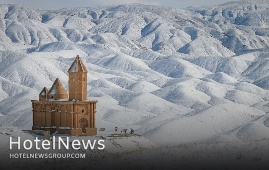
A project to restore and reinforce the ancient Saint John Church has begun in the village of Sohrol, near Shabestar city in East Azarbaijan province, the deputy provincial tourism chief has announced. The project involves the reinforcement of the church’s main structure and its foundation, as well as repairing the damaged parts, Alireza Quchi said on Saturday. Rehabilitation work has been ongoing on the historical structure for the past several years in order to make it stronger, the official added. Last year retaining walls for stabilizing soil around the monument were constructed to prevent it from being swept away by a landslide, he explained. Also known as Sohraqeh Church, the Armenian Catholic church was built in circa 5th century, but it was rebuilt on the older church foundation in 1840 by Samson Makintsev, a Russian general in the service of Iran during the Qajar era. The historical monument was inscribed on the National Heritage list in 1968. Iran is home to several ancient and historical churches. Christians, Jews, and Zoroastrians are the most significant religious minorities in the country with Christians constituting the bulk. Iranian Azarbaijan was the center of several ancient civilizations. It formed part of Urartu and later of Media. In the 4th century BC, it was conquered by Alexander the Great and was named Atropatene after one of Alexander’s generals, Atropates, who established a small kingdom there. The area returned to Persian (Iranian) rule under the Sasanians in the 3rd century CE.
Create: Oct 10, 2021 Edit: Oct 10, 2021 Regional News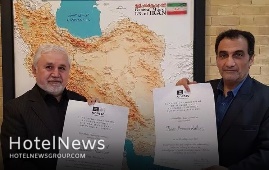
Certificates of registration of four Iranian UNESCO World Heritage sites have been handed over to the tourism ministry, the deputy tourism minister has announced. The Ministry of Cultural Heritage, Tourism, and Handicrafts has received registration certificates of four cultural heritage, which have been listed by UNESCO over the last two years, IRNA quoted Ali Darabi as saying on Friday. The ministry has received certificates for Trans-Iranian Railway, Cultural Landscape of Uramanat as tangible cultural heritages as well as the art of miniature, jointly with Azerbaijan, Turkey, and Uzbekistan and pilgrimage to St. Thaddeus jointly with Armenia, as UNESCO Intangible Cultural Heritage, the official added. Having a global register of tangible and intangible heritage is vital because these works, regardless of race, nationality, and religion, belong to all human society, and all governments and nations have a duty to preserve and protect them, even during times of war, he noted. Increased recognition of a country’s cultural heritage on the World Heritage list certainly contributes to the development of the tourism industry and businesses related to it, and most importantly, introduces the culture and civilization of a nation to the world, he explained. With 26 World Heritage Sites, Iran ranks 10th in the world in terms of the number of historical monuments and sites registered on the UNESCO World Heritage list. Before the Islamic Revolution, Persepolis, Naghsh-e Jahan Square, and Choghaznabil were the only three UNESCO-listed monuments, but today the number has been increased this number to 26 historical sites. Trans-Iranian Railway The railway can be regarded as a turning point for comprehensive developments in Iran. These developments include a wide spectrum of various economical, commercial, social, cultural, and even political aspects in a sensitive and important period of contemporary world history. Consequently, the 1394 kilometers long Trans-Iranian Railway was built with a width of 1435mm and 90 working stations along its route. It starts at a point north of Torkaman port located southeast of the Caspian Sea. After going through Sari and Qaem-Shahr cities, the railway enters the mountainous region of Alborz through the high Firooz-kooh Pass which is linked with Tehran and Varamin Plain by numerous bridges and tunnels. Further on after crossing the flatlands of Qom and Arak, the Trans-Iranian Railway penetrates Zagros highlands in Lorestan Province and passing through a large number of tunnels and bridges reaches Andimeshk situated in the low Kuzestan Plain. Finally extending to the vicinity of Dezful, Ahwaz, and its grand bridge on Karoon, the Trans-Iranian Railway is divided into two branches ending separately at Khoram-Shahr and Imam-Khomeini ports on the Persian Gulf. Cultural Landscape of Uramanat Stretched on the slopes of Sarvabad county, and shared between the provinces of Kordestan and Kermanshah, the rural area of Uramanat embraces dense and step-like rows of houses in a way that the roof of each house forms the yard of the upper one, a feature that adds to its charm and attractiveness. As the cultural landscape covers 300 villages and in terms of architecture and landscape, it is one of the most beautiful and presentable heritages in the world. Uraman is considered a cradle of Kurdish art and culture from the days of yore. Pirshalyar, which is named after a legendary local figure, is amongst time-honored celebrations and rituals that are practiced annually across the region. The art of miniature The miniature is a type of two-dimensional artwork that involves the design and creation of small paintings on books, paper-mâché, rugs, textiles, walls, ceramics, and other items using raw materials such as gold, silver, and various organic substances. Historically, the miniature was exemplified by book painting in which the text was supported visually, but the element has evolved and can also be observed in architecture and as an adornment in public spaces. The miniature displays a specific type of perspective in which the size of the figures changes according to their importance - a key difference between realistic and naturalistic styles. Though it has existed for centuries, it continues to develop and thus strengthens the bonds between past and present. Traditional painting principles and techniques are preserved, but artists also bring individual creativity into the process. Pilgrimage to the St. Thaddeus The annual three-day pilgrimage to St. Thaddeus Apostle Monastery in northwestern Iran is held each July. The pilgrimage venerates two prominent saints: St. Thaddeus, one of the first apostles preaching Christianity, and St. Santukhd, the first female Christian martyr. The bearers of the element are the Armenian population in Iran, Iranian-Armenians residing in Armenia, and followers of the Armenian Apostolic Church. Pilgrims gather in Tabriz before departing for the monastery. They cover 700 kilometers from Yerevan to the monastery annually. The commemoration ceremony includes special liturgies, processions, prayers, and fasting. It culminates in a Holy Mass with Holy Communion. Special times are set aside for traditional Armenian folk performances and Armenian dishes are served. The pilgrimage is the primary social and cultural event of the year.
Create: Oct 10, 2021 Edit: Oct 10, 2021 Regional News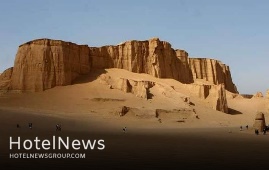
A clean-up project has recently been completed on Shahdad, part of the UNESCO-registered Lut desert, a local tourism official has announced. The project was carried out in collaboration with some eco-lodge owners nearby on the occasion of National Tourism Week (September 27-October 4), Hojjat Ebrahimizadeh said on Saturday. The project involved cleaning and collecting garbage left by some tourists in this area, the official added. Shahdad Desert receives a large number of tourists each year, making it imperative to adhere to hygienic principles so they can continue to enjoy its beautiful nature, he noted. Tourists are hence advised to collect their garbage from the region before they leave, he explained. Situated in southeastern Kerman province, Shahdad is home to shifting sands, salt plains, meteorite fields, and rocky terrain, which offers visitors breathtaking vistas and unparalleled serenity of the intact nature and wilderness. It has long been a destination for adventurers, nature lovers, off-roaders, and trekkers. The Lut Desert, widely referred to as Dasht-e Lut (“Emptiness Plain”), is a large salt desert encircled by the provinces of Kerman and Sistan- Baluchestan, and South Khorasan. It is the world’s 27th-largest desert and was inscribed on UNESCO’s World Heritage List on July 17, 2016. Seven years of satellite temperature data analyzed by NASA show that the Lut Desert is the hottest spot on Earth. Based on the research, it was the hottest during 5 of the 7 years and had the highest temperature overall: 70.7°C in 2005. The desert is also considered one of the top areas in the world for finding meteorites, thanks to its unique parameters. In recent years, significant finds have been made, with the efforts of national and international teams of researchers.
Create: Oct 9, 2021 Edit: Oct 9, 2021 Regional News
Based on the planning, each Iranian province will be granted one week to showcase its capacities at Expo 2020 Dubai, according to the managing director of Iran International Exhibitions Company. Speaking during a press conference, Hassan Zamani underlined the economic, cultural, social and political significance of the Expo, saying that some 198 countries will participate in the event. Expo 2020 in Dubai runs from October 1, 2021 until March 31, 2022. Zamani said that Iran’s pavilion at the Expo will open on October 2 with the virtual presence of the Minister of Industry, Mine and Trade. Referring to Iran’s agenda at the event, he said that Iran is firstly focused on non-oil exports which are predicted to hit $100 billion and then the country will seek to observe investments for different projects. Iran has spent the least money on designing its pavilion in comparison with other participating countries, he said, however noting that the Iranian pavilion has been selected among the top eight pavilions in the event.
Create: Oct 9, 2021 Edit: Oct 9, 2021 International News
IHG Hotels & Resorts, one of the world’s leading hotel companies, has opened Holiday Inn Paris – CDG Airport in partnership with the HPVA HOTELS group. Holiday Inn is one of the most recognized hotel brands in the world, offering a warm, welcoming, consistent, and affordable experience at all its hotels worldwide. Holiday Inn Paris – CDG Airport is a 10-minute free shuttle ride from Paris Charles de Gaulle International Airport and only a 30-minute train ride to central Paris, making it a great choice for those looking for a warm welcome and a place to rest before or after a flight. The hotel’s 250 modern guest rooms have been designed around the concept of ‘central living’, allowing for a more central space for relaxing and casual working. Some rooms are fitted out with a sofa bed providing guests with a flexible space for watching TV, lounging, or working, whilst also providing families the flexibility to have another sleeping space for children. The hotel’s public shared spaces offer the brand’s stylish ‘Open Lobby’ concept, designed to combine the hotel’s reception area, restaurant, bar, and lounge into one open and cohesive space to provide guests with a place to relax, eat and work. For those travelling for business, Holiday Inn Paris CDG Airport also has a dedicated Business Centre, 705m² of meeting spaces with daylight that can accommodate up to 350 people, and plenty of parking with electric charging stations. Holiday Inn Paris CDG Airport has a Restaurant and Bar with its own terrace and garden space for guests to enjoy. The Restaurant has an all-day dinning menu offering French flavours and focuses on casual sharing plates prepared with local quality produce. For those looking to keep up their fitness regimes, there is a fully equipped gym on the top floor, including a sauna with great views of the airport’s runways. The hotel also has a dedicated Crew Lounge intended to welcome airline crew who are in transit and looking for a quiet and intimate setting to relax. Rooms at Holiday Inn Paris CDG start from €149 per night for bed and breakfast. IHG Rewards members will have access to exclusive member rates and can earn and redeem IHG Rewards points when they book direct at ihg.com. The Holiday Inn brand from IHG Hotels & Resorts has served hundreds of millions of guests worldwide during its nearly 70-year history and is one of the most recognised and trusted travel brands in the world.
Create: Oct 9, 2021 Edit: Oct 9, 2021 International News
Wyndham Hotels & Resorts (NYSE: WH), the world’s largest hotel franchising company with approximately 9,000 hotels across nearly 95 countries, and Playa Hotels & Resorts (NYSE: PLYA), a leading owner, operator and developer of all-inclusive resorts in popular vacation destination in Mexico and the Caribbean, announced today the launch of a new all-inclusive resort brand, Wyndham Alltra. The announcement marks Wyndham’s 22nd brand and its first dedicated entirely to the fast-growing, all-inclusive segment. In conjunction with the brand launch, Wyndham begins a strategic alliance with Playa Hotels & Resorts, leveraging Wyndham’s unparalleled ability to drive sales, marketing and distribution in the economy, midscale and upscale segments via its 89 million enrolled Wyndham Rewards Members and distinct Everyday Travelers, combined with Playa’s ability to provide a best in class hospitality experience and exceptional value to guests. The new brand’s name “Alltra” is born from the brand promise of “All-Inclusive Travel for All,” keeping with Wyndham’s mission of delivering exceptional experiences to the everyday traveler. Wyndham Alltra creates an all-inclusive resort experience that is distinct to the upper-midscale segment, offering upscale food and beverage, services, amenities and activities with an expressive local flavor at an exceptional value. The brand will feature both family-friendly and adults-only resorts in the Caribbean and other resort destinations. The first two resorts to debut under the Wyndham Alltra brand are Playa’s 458 room Wyndham Alltra Cancun located in the heart of the Hotel zone with its 10 upscale restaurants, bars, lounges and pools, and the 287 room Wyndham Alltra Playa del Carmen in the heart of Playa Del Carmen featuring unlimited gourmet dining just steps from Fifth Avenue with its bars, restaurants and high-end shops. Currently undergoing renovations, both resorts remain open and are scheduled to complete renovations and become Wyndham Alltra resorts in time for the holidays in December 2021. The two resorts will mark the first of many properties to be developed under the strategic alliance between Wyndham and Playa in the upper-midscale, all-inclusive resort sector in the Caribbean and Mexico that Playa currently operates in. “Wyndham Alltra will introduce many of our over 150 million annual guests to our first all-inclusive brand,” said Geoffrey A. Ballotti, president and chief executive officer of Wyndham Hotels & Resorts. “Partnering with a leading owner, operator and developer of all-inclusive resorts in prime beachfront locations, will create immediate access for our customers and our over 80 million Wyndham Rewards members to a fabulous, all-inclusive guest experience – members who will be able to redeem their Wyndham Rewards points for a new all-inclusive vacation experience at Wyndham Alltra resorts, and earn points for their stays.” “Today’s announcement combines Wyndham’s robust distribution capabilities and award-winning loyalty program with our highly acclaimed all-inclusive expertise. Together, we are launching a new experience in the upper-midscale resort segment to reach more first-time all-inclusive guests,” said Bruce Wardinski, chairman and chief executive officer, Playa Hotels & Resorts. Details about first two Playa properties to become Wyndham Alltra resorts: • Wyndham Alltra Cancun, All-Inclusive Resort – Guests can enjoy the ultimate all-inclusive vacation on Mexico’s Yucatan Peninsula with a stay at Wyndham Alltra Cancun. Situated in the heart of the lively Hotel Zone, our sprawling beachfront resort is the perfect escape for families, couples, and group gatherings. From the moment guests arrive, they’ll be transported to paradise with more than 10 incredible restaurants, bars and lounges, multiple pools, and a host of included activities ranging from yoga classes to tequila tastings. Kids of all ages will love our pirate-themed splash park, waterslides, and mini-golf course, while teens can spend afternoons and evenings in our #Hashtag hangout room. Throughout their stay, guests can keep up with their workout routine in a state-of-the-art fitness center or with one of our many group fitness classes—and be sure to make time for indulgent treatments and the complimentary hydrotherapy area at Aura Spa. Just 21 kilometers (13 miles) from Cancun International Airport (CUN), our picture-perfect resort is close to ancient Mayan ruins, lively nightlife in downtown Cancun, and so much more. Each of our contemporary suites is appointed with everything a guest needs to unwind—from fully-stocked minibars to terraces with incredible views of the Caribbean Sea. If celebrating a wedding or planning a business meeting, guests can host a memorable gathering with customizable all-inclusive packages in one of our outdoor or indoor venues. • Wyndham Alltra Playa del Carmen, Adults Only All Inclusive – Guests revel in an adults-only paradise along the idyllic Riviera Maya, steps from a breathtaking beach, fantastic shopping along 5th Avenue, and vibrant nightlife. Just 55 kilometers (34 miles) from Cancun International Airport (CUN), Wyndham Alltra Playa del Carmen, Adults Only All Inclusive offers the ultimate carefree vacation with unlimited gourmet dining and creative cocktails as well as a state-of-the-art fitness center, daily activities like beachfront yoga and aqua aerobics, and nightly entertainment. Guests can take a dip in the sparkling Olympic-size pool overlooking the Caribbean Sea, enjoy a leisurely stroll along the warm white sand, or get pampered at the full-service spa and salon. After a day of sunning, shopping, or sightseeing, guests will love retreating to one of our 287 non-smoking rooms and suites, featuring a balcony or terrace for savoring the sunset and thoughtful conveniences like a fully stocked minibar, complimentary bath products, and free WiFi. If guests want to book an excursion to Cozumel or snag a table at the hottest club, our friendly, multilingual staff are always on standby to ensure they have the vacation they’ve been dreaming about. Wyndham Alltra is designed to make it easier for the everyday traveler to find truly outstanding all-inclusive hotel experiences outside of the current upscale and luxury options. This will provide an opportunity for hotel developers, owners, and investors to welcome new customers to all-inclusive hotels with unmatched support from Wyndham. The brand invites hoteliers to take advantage of Wyndham’s scale, distribution, services and loyalty program through this new all-inclusive brand.
Create: Oct 9, 2021 Edit: Oct 9, 2021 International News
The Travel & Tourism sector’s continued sluggish recovery will see its year-on-year contribution to global GDP rise by less than one third in 2021, according to new research from the World Travel & Tourism Council (WTTC). WTTC, which represents the global Travel & Tourism private sector, says the recovery of the sector has been hampered by the lack of international coordination, severe travel restrictions and slower vaccination rates in some parts of the world which still hamper many regions of the world. In 2019, the Travel & Tourism sector generated nearly USD 9.2 trillion to the global economy, however in 2020, the pandemic brought Travel & Tourism to an almost complete standstill which resulted in a 49.1% drop, representing a punishing loss of nearly USD$ 4.5 trillion. While the global economy is set to receive a modest 30.7% year on year increase from Travel & Tourism in 2021, this will only represent USD 1.4 trillion and is mainly driven by domestic spending. The economic modelling was conducted by Oxford Economics on behalf of WTTC and calculated a baseline scenario based on the current global vaccination rollout, consumer confidence and relaxed travel restrictions in some in regions around the world. The research reveals that at the current rate of recovery, Travel & Tourism’s contribution to the global economy could see a similar moderate year on year rise of 31.7% in 2022. Last year, WTTC revealed the loss of a staggering 62 million Travel & Tourism jobs around the world and with the current pace of recovery, jobs are set to rise by only 0.7% this year. Similarly, research shows a more hopeful potential year-on-year jobs rise across the sector next year, by a positive 18%. Julia Simpson, WTTC President & CEO said: Our research clearly shows that while the global Travel & Tourism sector is beginning to recover from the ravages of COVID-19 there are still too many restrictions in place, an uneven vaccine rollout, resulting in a slower than expected recovery of just under a third this year. Last year, 62 million Travel & Tourism jobs were lost globally, and our data shows a rise of a meagre 0.7% this year. While next year is looking more positive in terms of the global economy and jobs, the current rate of recovery is simply not fast enough and is in the most part driven by domestic travel, which will not achieve a full economic recovery. If governments can start looking internationally and support Travel & Tourism with simplified rules to enable the safe return of travel, there is the opportunity to save jobs and boost economic wealth”. According to the research, the sector’s contribution to global GDP and the rise in jobs could be more positive this year and next, if the following measures are met: Allow fully vaccinated travellers to move freely, irrespective of their origin or eventual destination, removing complex tiered systems. The implementation of digital solutions which enable all travellers to easily prove their COVID status, so in turn speeding up the process at borders around the world. Recognition of all vaccines authorised by the World Health Organisation (WHO) and/or any of the Stringent Regulatory Authorities (SRA).Agreement from all relevant authorities that international travel is safe with enhanced health and safety protocols. The future could be brighter The research shows that if these four vital rules are followed before the end of 2021, the impact on the global economy and jobs could be significant. According to the data, the sector’s contribution to the global economy could jump by 37.5% – reaching USD 6.4 trillion this year (compared to USD 4.7 trillion in 2020). However, there is still hope if restrictions continue being lifted and with more international cooperation, governments could bring back nearly 19 million jobs before the year ends (up 6.8%). The trend continues into next year when the sector’s contribution to the global economy could see a year on year rise of 34%, reaching USD 8.6 trillion, close to 2019, a record year for Travel & Tourism. Similarly, jobs could surpass 2019 levels – up 20.1% year on year, to more than 349 million.
Create: Oct 9, 2021 Edit: Oct 9, 2021 International News
Iran is prepared to repair and restore Syrian historical monuments and tourism infrastructure that have been destroyed by the Islamic State in Iraq and Syria (ISIS), the deputy tourism minister Ali-Asghar Shalbafian has announced. He made the remarks during a meeting with the Syrian Minister of Economy and Foreign Trade Mohammad Samer al-Khalil on Sunday in the Expo 2020 Dubai. “The Iranian restorers can then exchange experiences with Syrian specialists,” the official added. He also emphasized Iran’s readiness to strengthen communication and develop tourism ties between the two countries. Health tourism and medical tourism is one of Iran's most important strengths in the tourism sector, and we welcome Syrian tourists to make use of this opportunity,” he noted. Al-Khalil for his part said that there is an increasing interest among Syrian tourists in visiting Iran, especially its northern coasts, as well as to Iranian holy cities, so the necessary grounds need to be created. The Expo 2020 Dubai opened on Thursday with a lavish ceremony of fireworks, music, and messaging about the power of global collaboration for a more sustainable future. Iran’s pavilion in the world fair is planned to showcase each Iranian province’s strengths and assets in tourism, cultural heritage, handicrafts, as well as its natural sites, traditional ceremonial practices, and historical significance. Many countries and companies are also looking to the expo - the first major global event open to visitors since the coronavirus pandemic - to boost trade and investment. According to organizers, the Expo, an exhibition of culture, technology, and architecture under the banner “Connecting Minds and Creating the Future”, is expected to be a demonstration of ingenuity, and a place where global challenges such as climate change, conflict, and economic growth can be addressed together. The Persian Gulf state has relaxed most coronavirus limitations but Expo requires face masks to be worn and for visitors over 18 to be vaccinated against, or test negative for, COVID-19. Iran expects to reap a bonanza from its numerous tourist spots such as bazaars, museums, mosques, bridges, bathhouses, madrasas, mausoleums, churches, towers, and mansions, of which 26 being inscribed on the UNESCO World Heritage list.
Create: Oct 3, 2021 Edit: Oct 9, 2021 Regional News
